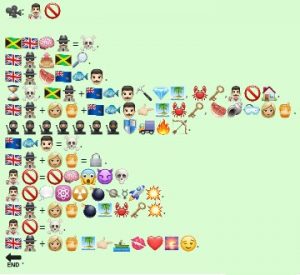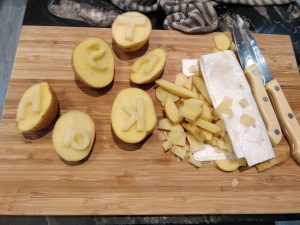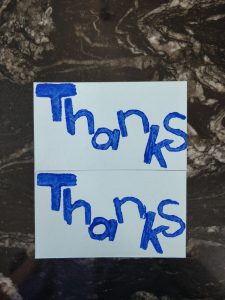This was my first experience creating something in Twine, and it was fun! My biggest challenges were deciding on a topic (I landed on adult learning concepts) and then trying to differentiate between creating a ‘story’ versus a ‘game.’ I’m still not sure I created anything that sits strongly in one category or the other. I do know that, much like the potato print exercise, I had an inner desire to apply this learning to create something that I felt could have multiple use cases, given the time and energy investment. (If that connection doesn’t make sense now, have a click through the Twine game below and it should become clear.)
I like how Twine creates a visual path to show how passages are connected, but then “flattens and obscures the structure” (Bolter, 2001, p.31) to create an interactive web-based experience. I took a very straightforward path; it doesn’t involve fancy ‘hooks,’ if-statements, or macros. However, these options also demonstrate the malleability of electronic spaces that Bolter (2001) refers to. Certainly, I took advantage of this with several rapid additions/deletions, copy-paste functions, quick revisions, and testing.
Twine also made sense to me, the way my mind seems to work. When I’m speaking, both professionally and casually, I try to draw connections between concepts, guiding the listener through the story with (hopefully) the right amount of detail. In writing, I often refer to ideas being connected by ‘threads.’ Twine shows these connections (or associations, as Bolter (2001) might say) between passages with literal lines that ultimately define the thought network and show the overarching story path. It felt very similar to creating a concept map, just in story/game format and with a hypertext result. It does warrant pause, though, if my ‘natural’ way of thinking has been heavily influenced by having access to computers for the majority of my life. Growing up during a time when computers (those ‘idea processors’) went from high-tech wonders that few families had to living in (almost) everyone’s pocket, certainly makes me wonder how much technology contributes to my own “manipulation of thought” (Heim, 1987).
Ultimately, my ‘approach’ to this assignment was just to jump in and try it. I did notice, though, that my thoughts kept referring back to two experiences during this formation. The first was leveraging my past (albeit limited) experiences with web design and web editing. The second hailed from my childhood, where I used to relish in choose-your-own-adventure books, and appreciated how, no matter what option you chose, it still took you to the end. To me, this experience of combining ‘analog’ and ‘digital’ experiences aligns with Bolter’s (2001) view that technology may not ‘end’ things but rather iterate, reconceptualize, and remediate much of what we know and appreciate about various forms of communication.
ETEC540-Task5-SantoMelissa – Twine – zipped
References
Bolter, J. D. (2001). Chapter 3: Hypertext and the remediation of print. In Writing space: Computers, hypertext, and the remediation of print (pp. 27-46). Routledge. https://doi.org/10.4324/9781410600110
Butcher, L. (2021, March 1). The 4 principles of adult learning and how to apply them to your employee training. LinkedIn. https://www.linkedin.com/pulse/4-principles-adult-learning-how-apply-them-your-employee-butcher/
Heim (1987), as cited by the course website in module 5.3.




